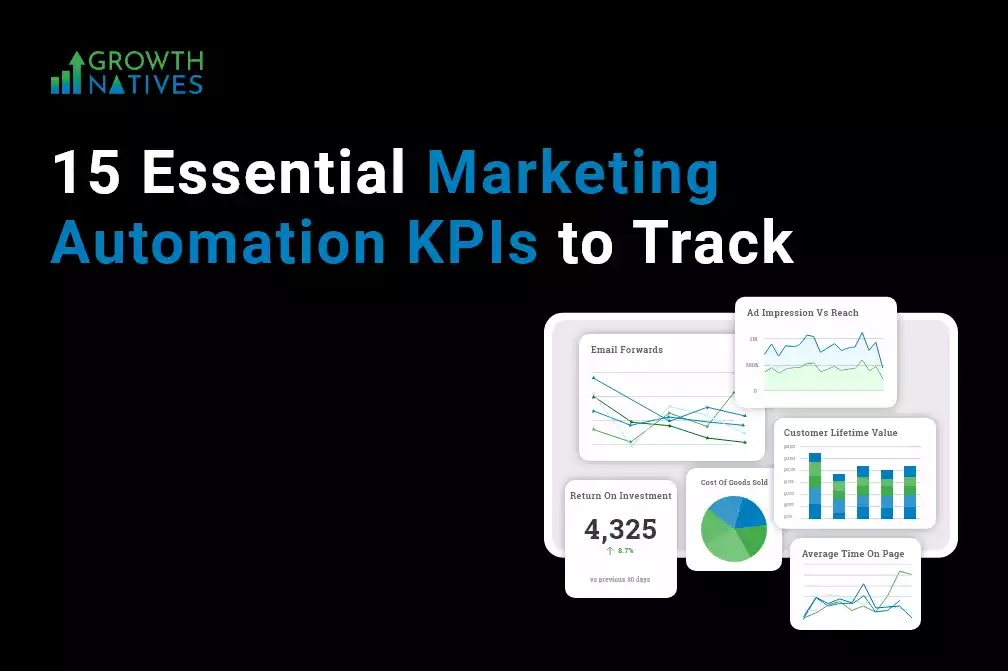
Leveraging Demand Planning for a Strategic Marketing Approach
By Sakshi Arora
Jan 12, 202210 min read
A goal without a plan is just a wish.”, said Antoine de Saint-Exupéry, perhaps in foresight of the importance of demand planning in running any kind of business. Demand planning helps organizations meet their customer demands for the products or services they offer by reducing interruptions. By applying demand planning as a marketing strategy, companies can significantly increase profit margins and boost customer satisfaction.
Henceforth, demand planning should be a continuous process that’s ingrained in your business. Fortunately, advances in technology have made accomplishing this possible, not to mention easier.
Marketers need a proper plan for long term success. And, when initiated in the right way, it acts as a road map that scrutinizes organizational geographies, vulnerabilities, and opportunities, putting a marketing plan in place to accomplish the business objectives.
The goal of a marketing plan is to refine strategies in order to give a company the right direction.
Demand Planning for a Strategic Marketing Approach
Demand planning is a little bit like weather forecasting. Thus, the purpose of demand planning becomes highly challenging. It is essential for the planners to execute a correct plan, otherwise, the consequences can be severe, leading to glitches in the marketing process.
When it comes to creating the right marketing approach, several marketing teams tend to work in isolation. However, in order to create a success-driven marketing plan, both marketing and sales teams have to work together.
In order to leverage demand planning in your marketing goals, there are some key steps to follow:
1. Creating a Team
Before you decide to implement any demand planning tactics, you need to make sure that your team members have clear goals and responsibilities.
2. Using Relevant Data
To project a correct forecast, the employees working should be on the same page when it comes to using data and insights.
3. Enhancing External Data
External data provides you with any additional information that will help in predicting the right strategy to deliver the best possible results.
4. Optimizing the Forecast
Evaluate, reanalyze, and optimize the demand prediction to evaluate whether the most current data has a significant influence on forecasts.
5. Measuring End Results
Set objectives for each of the key performance indicators (KPIs) that will allow you to assess the efficacy of your demand planning. Review performance against these goals on a regular basis and make modifications as needed.
Determining the Right Marketing Approach to Succeed
Objective
The first point of your marketing strategy is to determine the objectives and fundamental goals that your firm plans to attain. Sometimes they are already in place, but you may want to establish them from the start if you are working on a new project.
Setting the corporate mission, defining what your firm is all about, and determining what makes it distinctive is all part of this process. Instead of focusing on the items or services you want to offer, concentrate on the requirements that your firm addresses for your consumers.
Every successful business fulfills a need and the corporate purpose serves as the cornerstone for all of your marketing activities, providing you with a set of goals to aim for and measure your progress.
You can take the example of some leading organizations like IKEA, where the objective is to improve the quality of life for clients. The business model is created to provide a comprehensive range of well-designed home furnishings products at a competitive price.
While evaluating your business objective, make sure you have answers to these questions:
- What is your business purpose?
- What do customers say about your company?
- Does your mission statement explain your business strategy?
Remember to clearly describe your company's culture, beliefs, and philosophy while you work on creating your goals and objectives. This aids in providing direction to all of your workers, customers, and suppliers, ensuring that everyone understands where the company is headed and how you intend to get there.
Analysis
The evaluation of internal and external elements that impact your business and market plays a vital role in determining the best marketing strategy. The analysis gives you a clear, objective picture of the state of your business, your existing and potential consumers, industry trends, and your company's standing in the market.
Your research will identify your strengths as well as the problems you face, whether they are related to internal resources or external competitors. As a result, do a thorough examination of the market, industry rivals, any marketing channels accessible, as well as the economics, political atmosphere, and any other social variables that may have an impact.
The best way to proceed with this is through SWOT Analysis, where you can run the analysis by answering questions, such as:
Strengths:
- What strategies have worked the best previously?
- What is your competitive advantage?
- How is your business superior to your competitors in the marketplace?
Weakness:
- Where are you drifting?
- Why your strategies aren’t performing as anticipated?
- How do the resources affect your success?
Opportunities:
- What are other available markets?
- How can you take leverage of any market trends?
- What are all the possible use cases of your product or service?
Threats:
- What are the possible difficulties?
- Which areas can cause a problem?
- Are there any systemic failures in your processes?
You must research your target markets to verify that what you are providing meets demand and that the needs of your clients have not changed. Consider how effectively your competitors are meeting your consumers' demands, and determine where your firm can stand out and thrive.
Planning
A marketing strategy outlines how you can communicate the benefits of your products and services to your potential customers.
You should prioritise and sketch out the possibilities you want to explore now that you've discovered them via your study. A marketing strategy should describe your target consumers and how you aim to contact them, as well as a prediction of expected outcomes.
Remember to create an effective plan to make the most of all your marketing efforts. In addition, ensure that the plan you create is efficient and easily adaptable, as you need to leave room for optimizations based on the new trends.
The key is to select a target demographic and market and determine the way to attract them. This can be done by:
Defining your Target Audience
You want to divide the market into a sector that meets your strengths and possibilities best. Identifying customers is your aim. By picking all types of features, behaviors and demographics, you may determine your target market. What is crucial is that the audience is clearly defined and sufficiently broad to support your product or service.
Setting Realistic Goals
This indicates how many sales you desire to achieve. Each objective should be activated and achieved by setting proper goals. With each goal you want to achieve, align simple, and precise goals such as generating conversions, increasing brand awareness, etc.
Allocating Resources and Budget
It's now time to assign the resources needed to put your strategy into action. Your budget will detail all of the expenditures associated with implementing your marketing strategies, such as advertising, internet content, branding, public relations, and personnel.
Marketing Mix
You can create a marketing mix by profiling customers and defining goals and tactics that will help you to build a strong customer base. You have to be clear about what you market: convenience or quality? Moreover, you must be aware of who is likely to buy your product or service.
You can build the appropriate marketing mix for your target demographic, and the sort of product or service that you sell by utilizing market research.
Remember to make every effort and make sure it is resource-efficient and adaptive if abrupt modifications to your strategy are necessary. This part is mostly concerned with selecting a target market and how you will reach all of them. This is when the marketing mix, the four P's, comes into play that you have heard many times.
Product: The product that meets a consumer need.
Price: Setting the correct product price and knowing the perceived worth of the product by the consumer.
Promotion: Any channel you may use to reach your target group.
Place: The locations where your goods are sold, making it easy for customers to buy, online or offline.
Now that you know the main assets to build your marketing mix, it’s time to get you started on the three essential steps for creating the right marketing mix.
Finding Ideal Customers
It is important to know your customers. You need to create a customer profile so that you can make strategies based on product, promotion, placement, and pricing. Once you are able to make the profile, you will be one step closer to targeting the right consumers based on their demographics, location, etc. While doing this, make sure you keep all the possible use cases of your product in mind.
Determining Goals
Depending on your goals, you need to factor in your marketing tactics. For instance, if you are planning to achieve 50 leads per month, your goal should be diverse and aggressive. Some marketing tactics require more resources than others, so, depending on your budget and goals, build the most efficient marketing mix.
Making Strategic Decision

You will be able to bring strategic choices, which will reach your clients throughout your product life cycle once you have built your consumer profile and defined your goals and budgets. The trick is to select an efficient marketing mix. In other words, they have to reach and encourage your customers to purchase while remaining within your budget.
Implementation
Once you’ve diced up your marketing plan, it’s time for the final step. Your marketing plan is in place, but you need to assess and measure your progress so you can figure out what is working and what needs to be modified even more.
Determine how and when you will implement your strategy. You will contact clients at this step of the strategic marketing process to inform and persuade them to buy your product or service.
Getting the resources to advertise your product, coordinating the individuals who will perform the job, establishing calendars to keep the work on the track, and handling all of the specifics for each goal are all part of the implementation process. Creating monthly benchmarks and goals, weekly action steps, and daily marketing appointments can help you stay focused and enthusiastic.
The process of strategic marketing is ongoing. To be successful, you must monitor and analyze your plan's results on a regular basis. This will show you whether you are meeting your objectives and where you need to make tactical changes to improve your performance.
Remember, customers’ feedback matters a lot as it helps you take care of systemic inefficiencies in your process and make your product better, so you need to listen and engage with your customers in order to excel and meet your business goals. The feedback mechanism offers a different viewpoint and might also help you see new possibilities.
Takeaway
Setting goals, assessing internal and external business variables, product development, execution, and measuring progress are all part of strategic marketing planning. With demand planning, you can give an edge to your marketing approach to foster better results.




